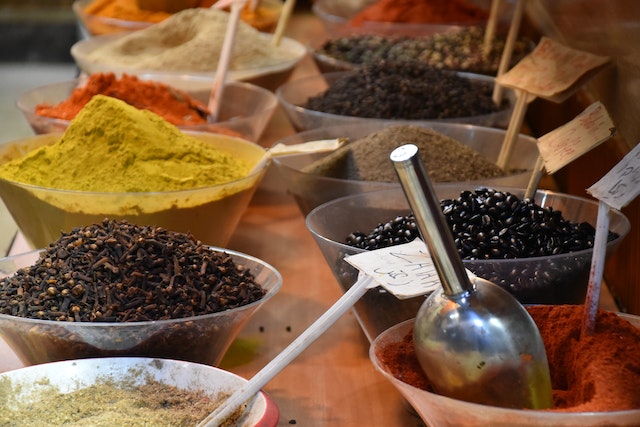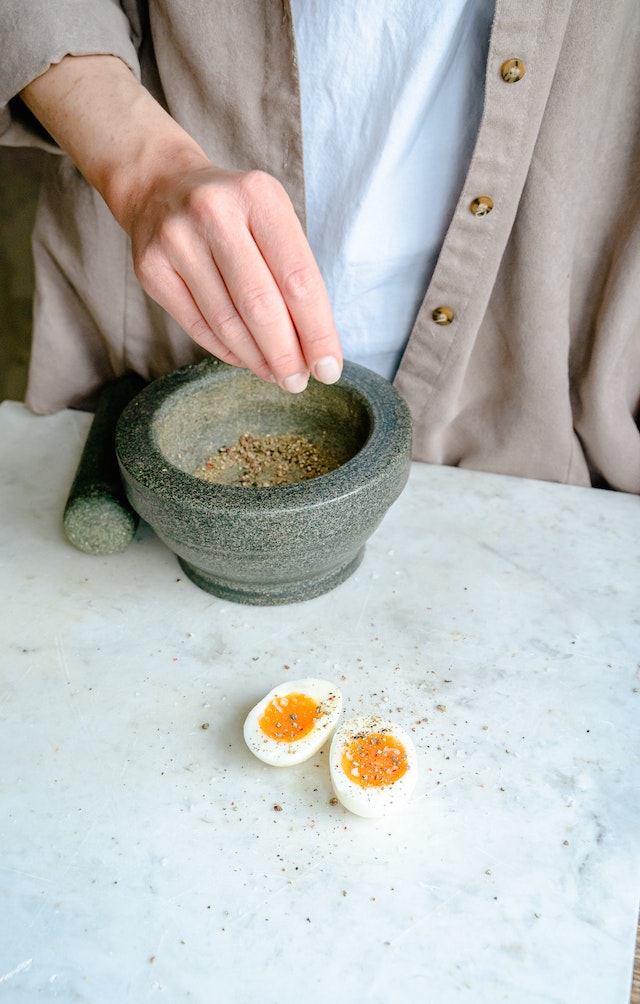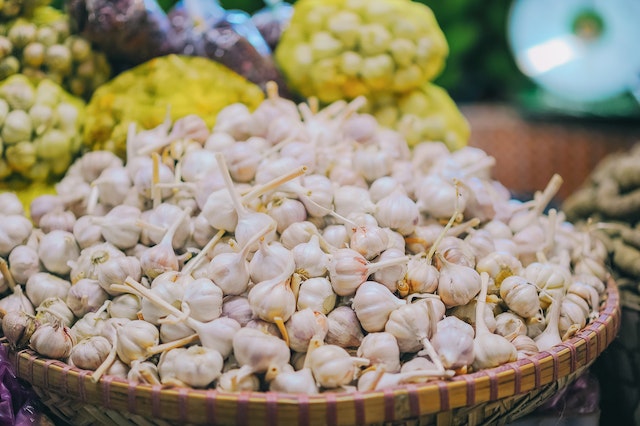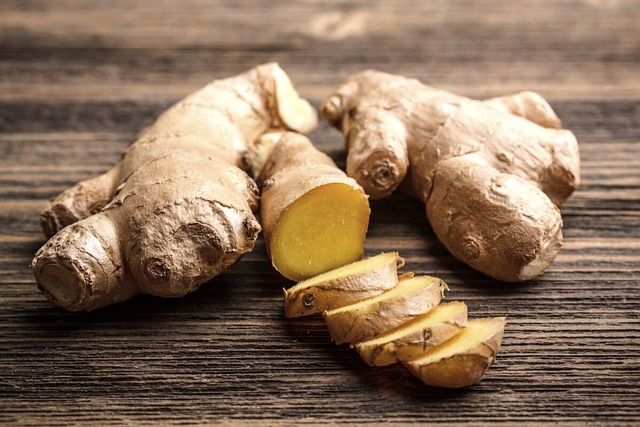
Spices are the unsung heroes of the culinary world, adding depth, aroma, and flavor to our favorite dishes. Whether you’re a seasoned chef or a cooking novice, having the right spices in your kitchen is essential for creating delicious meals that will tantalize the taste buds. In this guide, we will explore a selection of indispensable spices that no kitchen should be without. From the warm and comforting to the fiery and exotic, these spices will elevate your cooking and take your dishes to a whole new level. So let’s dive in and discover the aromatic wonders that await us within the spice realm!
Salt
Salt, the humble yet indispensable spice, is the cornerstone of flavor in every kitchen. It is the catalyst that enhances and balances the taste of all other ingredients, elevating dishes from bland to mouthwateringly delicious. In this section, we will explore the various types of salt and their unique characteristics, as well as its versatile uses in cooking.
Table Salt: The most commonly used salt, table salt, is fine-grained and highly refined. It dissolves quickly and uniformly, making it ideal for everyday cooking and baking. However, it lacks the subtle flavors present in other types of salt.
Sea Salt: Sea salt is harvested from evaporated seawater, producing coarse or flaky crystals. It retains minerals and elements from the ocean, giving it a slightly more complex flavor profile. Sea salt is perfect for finishing dishes, as its textured crystals add a delightful crunch.
Kosher Salt: Kosher salt has a coarse texture and is less dense than table salt due to its larger crystals. This type of salt is ideal for koshering meats, as the larger crystals help draw out moisture. Its subtle flavor and easy pinchability make it a favorite among professional chefs.
The Versatility of Salt in Cooking
Seasoning and Enhancing Flavors: Salt enhances the natural flavors of ingredients and brings out the best in your dishes. It balances sweetness, suppresses bitterness, and intensifies savory flavors.
Brining: By using salt in a brine, you can tenderize and add moisture to meats, resulting in juicy and flavorful results. Brining is particularly effective for poultry, pork, and fish.
Preserving and Fermenting: Salt has long been used as a preservative and a fermenting agent. From pickling vegetables to curing meats, salt inhibits bacterial growth and allows beneficial fermentation processes to occur.
Black Pepper
As we journey further into the aromatic wonders of the spice realm, we stumble upon the crowned king of all spices: black pepper. With its pungent and distinctive flavor, black pepper has earned its rightful place in kitchens around the world. So, let us delve deeper into the realm of this essential spice and unravel its secrets.
Types of Black Pepper

Tellicherry Pepper: Hailing from the Malabar Coast of India, Tellicherry pepper is known for its large size and robust flavor. It possesses a complex profile with bold, fruity notes and a lingering, warm heat. Tellicherry pepper is perfect for grinder mills, allowing you to freshly grind it for maximum flavor.
Malabar Pepper: Also originating from the same region as Tellicherry pepper, Malabar pepper offers a milder taste. Its aroma is characterized by earthy and citrusy undertones, making it suitable for a wide range of culinary creations.
Enhancing the Culinary Symphony
Seasoning Sensation: Black pepper’s primary role in the kitchen is as a versatile seasoning spice. Sprinkle it on grilled meats, roasted vegetables, and even creamy soups to elevate the flavors and provide a gentle kick.
Harmonizing with Salt: The harmonious duo of black pepper and salt is a classic combination, balancing flavors in numerous dishes. The boldness of black pepper enhances the saltiness, making them the best companions in creating well-rounded flavors.
Peppermill Power: A freshly ground sprinkle of black pepper sparks magic in your culinary endeavors. Invest in a reliable peppermill to unlock the true potential of this spice. Grinding the peppercorns just before using them ensures maximum flavor and aroma.
Beyond the Stovetop
Health Benefits: Black pepper isn’t just a flavor powerhouse; it also boasts various health benefits. Its active component, piperine, has been associated with aiding digestion, improving nutrient absorption, and providing antioxidant properties.
Creative Combinations: Black pepper is a versatile spice that can blend harmoniously with other ingredients to create unique flavor profiles. Experiment with infusing black pepper into butter, oils, or even sweet treats like chocolate for a delightful twist.
Ancient Roots: Appreciated for centuries, black pepper’s esteemed history traces back to ancient times. Once considered a precious commodity, it was a catalyst for exploration and trade routes during the days of the spice trade in the East.
Cumin
As we continue our aromatic journey in the realm of spices, we come across a true flavor powerhouse: cumin. With its warm and earthy fragrance, cumin has become a staple in kitchens around the world.
Types of Cumin
Cumin seeds come in various forms, each offering unique characteristics that can elevate your culinary creations. Here are a few noteworthy varieties:
Whole Cumin Seeds: These small, crescent-shaped seeds boast a strong aroma and a slightly peppery taste. Whole cumin seeds are commonly used in Indian, Middle Eastern, and Mexican cuisines. Toasting the seeds before use enhances their flavor and adds depth to your dishes.

Ground Cumin: Ground cumin is a convenient option for those who prefer the ease of measuring and incorporating the spice into their recipes. It has a rich, warm flavor profile and pairs well with other spices like coriander and chili powder. Ground cumin is widely used in spice rubs, curry blends, and chili recipes.
The Versatility of Cumin in Cooking
Spice Blends and Rubs
Cumin is a key ingredient in many spice blends and rubs, adding a distinctive depth of flavor. From Indian garam masala to Mexican chili powder, cumin creates a complex taste profile that enhances meat, vegetables, and legumes.
Sauteed and Roasted Dishes
Sauteing or roasting vegetables and meats with a sprinkle of cumin can take them from ordinary to extraordinary. The spice’s warm and nutty undertones complement a wide range of ingredients, adding complexity to dishes like roasted root vegetables or charred chicken.
Soups, Stews, and Sauces
A touch of cumin can transform a humble soup or stew into a flavorful culinary masterpiece. Whether you’re cooking a hearty lentil soup or a savory tomato sauce, the spice brings depth, richness, and a comforting warmth to the dish.
Paprika
Paprika is a vibrant red spice derived from the dried and ground pods of sweet or hot peppers. Its rich color and delicate flavor make it an indispensable ingredient in various cuisines across the globe. Let’s delve into the world of paprika and discover its remarkable qualities.
Types of Paprika
- Sweet Paprika: This variety of paprika, made from mild peppers, adds a gentle, sweet flavor to dishes. Its vibrant red hue makes it a perfect finishing touch for deviled eggs, roasted vegetables, and creamy dips.
- Smoked Paprika: As the name suggests, this paprika undergoes a smoking process, imparting a robust and smoky flavor. It enhances dishes like barbecued meats, stews, and even adds a unique twist to baked goods like bread and muffins.
- Hot Paprika: For those seeking a fiery kick, hot paprika is the spice to reach for. Made from hot chili peppers, this variety adds heat and intensity to dishes like spicy curries, chili con carne, and marinades for grilled meats.
Adding Flair to Culinary Creations:

Colorful Seasoning: Paprika’s vibrant red hue adds visual appeal to dishes, making them look as enticing as they taste. Sprinkle a pinch of sweet paprika on top of creamy soups, roasted potatoes, or even deviled eggs for a burst of color.
Flavorsome Rubs: Create a tantalizing spice rub by combining paprika with other aromatic herbs and spices. Rub the mixture onto meats, poultry, or vegetables before grilling or roasting to infuse them with a delightful balance of flavors.
Hearty Stews and Sauces: Paprika finds its true calling in rich stews and savory sauces. It adds depth and complexity to Hungarian goulash, Spanish paella, and traditional Indian curry dishes.
Garlic Powder
As we continue our journey through the aromatic wonders of the spice world, we come across the ubiquitous yet enchanting spice known as garlic powder. With its pungent and distinctive aroma, garlic powder has become a staple in kitchens around the world. In this section, we will explore the captivating qualities of this essential spice and uncover the secrets it holds.
The Versatility of Garlic Powder in Cooking
Garlic powder is a versatile spice that can transform ordinary dishes into culinary delights. Let’s explore some of its remarkable uses in the kitchen.
Flavor Amplifier:
Just a pinch of garlic powder can elevate the flavor profile of any dish. Its potent and savory notes add depth and complexity to soups, stews, sauces, and marinades. Whether you’re cooking a hearty spaghetti sauce or a comforting bowl of chicken noodle soup, garlic powder is the perfect companion to enhance the overall taste.
Seasoning Sensation:

Garlic powder shines as a seasoning spice, adding a burst of flavor to meats, vegetables, and even snacks. Sprinkle it on roasted potatoes for a savory kick or dust it over popcorn for a delightful twist. With garlic powder, the possibilities are endless.
Sauteed and Sautéed Delights:
Sautéing vegetables or meats with a touch of garlic powder can create a mouthwatering experience. Its aromatic allure infuses the ingredients, filling the kitchen with an irresistible fragrance. From garlic-infused mushrooms to seared garlic shrimp, this spice adds a delightful depth to your sautéed dishes.
Ancient Origins of Garlic Powder:
Garlic has a long and storied history that dates back to ancient times. Used for both culinary and medicinal purposes, garlic holds a significant place in many cultures. The use of garlic powder can be traced back centuries, where it was used as a flavoring agent and for its health benefits. Its powerful aroma and distinctive taste have made it a beloved spice in kitchens throughout history.
Other Must-Have Spices
As we continue our exploration of the spice realm, we come across a treasure trove of other essential spices that can transform your cooking from ordinary to extraordinary. These aromatic wonders add depth, complexity, and a touch of magic to a wide range of dishes. Let’s embark on a flavorful journey as we uncover the secrets of these must-have spices.
Cinnamon
Cinnamon, with its sweet and warming essence, is a versatile spice that transcends culinary boundaries. Whether used in savory or sweet dishes, it adds a cozy and comforting touch. From its use in curries and stews to its starring role in desserts like apple pie and cinnamon rolls, cinnamon is a spice that can transport your taste buds to a world of pure delight.
Turmeric
Turmeric, known for its vibrant golden color and earthy flavor, has been revered for its healing properties for centuries. With its active compound, curcumin, it is believed to have anti-inflammatory and antioxidant benefits. In the kitchen, turmeric adds a warm and slightly peppery flavor to curries, rice dishes, and even smoothies. Its striking hue also brings an enticing visual appeal to any culinary creation.

Ginger
Ginger, with its zesty and slightly spicy taste, is a staple in Asian and Middle Eastern cuisines. It adds a delightful kick to stir-fries, marinades, and dressings, while also imparting a soothing warmth to teas and desserts. Known for its digestive and anti-inflammatory properties, ginger is not only a culinary superstar but also a health-enhancing spice.
Nutmeg
Nutmeg, with its warm and fragrant notes, is a spice that can enliven both sweet and savory dishes. Its distinct flavor pairs beautifully with creamy sauces, baked goods, and beverages like eggnog. Grating fresh nutmeg not only enhances the taste but also releases its intoxicating aroma, making it an essential addition to your spice rack.
Oregano
Oregano, with its robust and aromatic profile, is a cornerstone of Mediterranean cuisine. It adds a delightful earthiness to pasta sauces, pizza, roasted vegetables, and grilled meats. The dried leaves of oregano possess intense flavors that can transport you to the sun-kissed shores of the Mediterranean with every bite.
From the humble yet indispensable salt to the crown jewels of black pepper, cumin, paprika, garlic powder, and the other essential spices, each one has the ability to transport our palates and elevate our culinary endeavors. So, embrace the magic of these spices, experiment with their unique characteristics, and embark on a culinary adventure that will leave you savoring unforgettable tastes and aromas.
